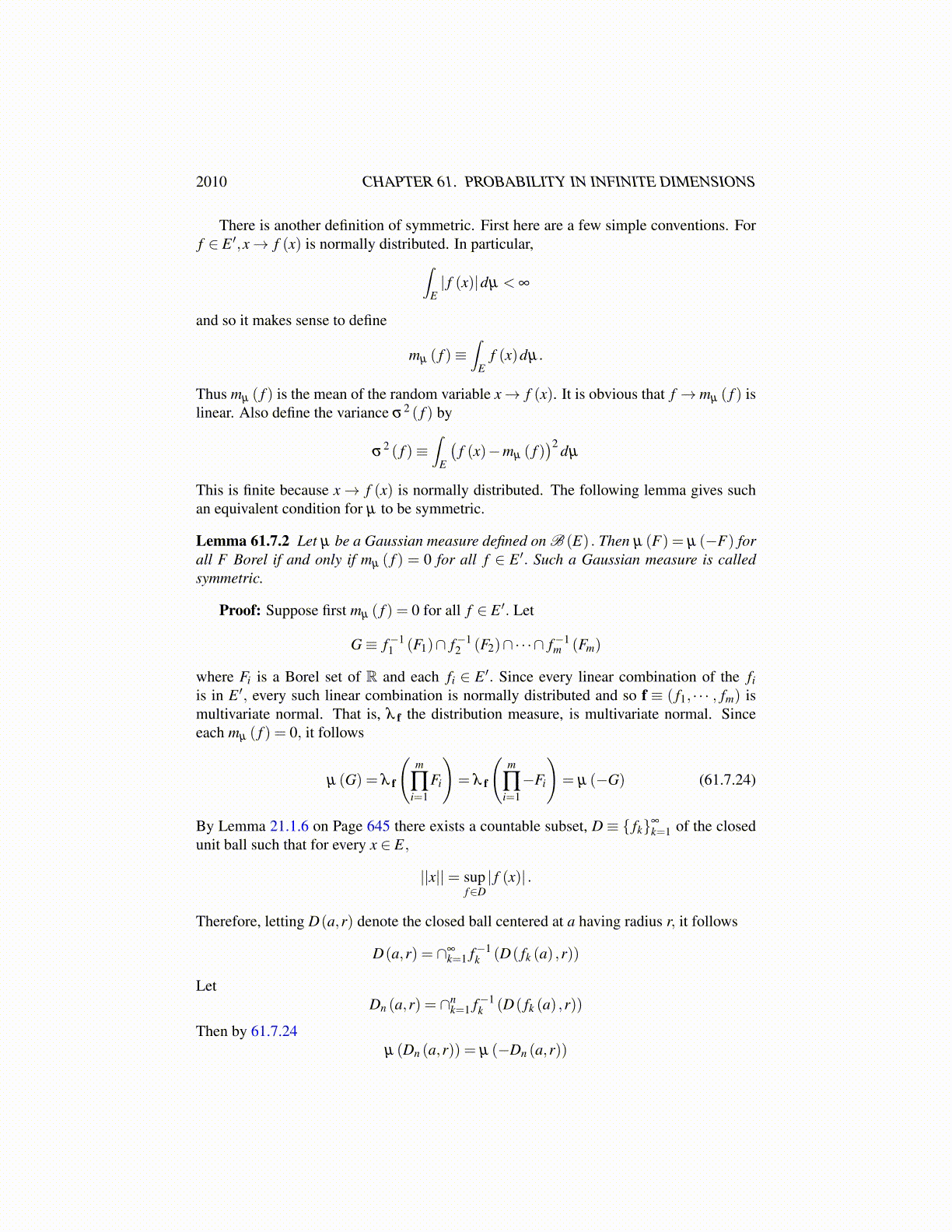
2010 CHAPTER 61. PROBABILITY IN INFINITE DIMENSIONS
Hence ln f (x) = kx and so ln f(t2)= kt2 and so φ (t) = f
(t2)= ekt2
for all t. The con-stant, k must be nonpositive because φ (t) is bounded due to its definition. Therefore, thecharacteristic function of ν is
φ ν (t) = e−12 t2σ2
for some σ ≥ 0. That is, ν is the law of a generalized normal random variable.Note the other direction of the implication is obvious. If ξ ,ζ ∼ N (0,σ) and they are
independent, then if α2 +β2 = 1, it follows
αξ +βζ ∼ N(0,σ2)
because
E(
eit(αξ+βζ ))
= E(
eitαξ
)E(
eitβζ
)= e−
12 (αt)2
σ2e−
12 (β t)2
σ2
= e−12 t2σ2
,
the characteristic function for a random variable which is N (0,σ). This proves the theorem.The next theorem is a useful gimmick for showing certain random variables are inde-
pendent in the context of normal distributions.
Theorem 61.6.9 Let X and Y be random vectors having values in Rp and Rq respectively.Suppose also that (X,Y) is multivariate normally distributed and
E((X−E (X))(Y−E (Y))∗
)= 0.
Then X and Y are independent random vectors.
Proof: Let Z =(X,Y) ,m = p+q. Then by hypothesis, the characteristic function of Zis of the form
E(eit·Z)= eit·me−
12 it∗Σt
where m = (mX,mY) = E (Z) = E (X,Y) and
Σ =
(E((X−E (X))(X−E (X))∗
)0
0 E((Y−E (Y))(Y−E (Y))∗
) )≡
(ΣX 00 ΣY
).
Therefore, letting t = (u,v) where u ∈ Rp and v ∈ Rq
E(eit·Z) = E
(ei(u,v)·(X,Y)
)= E
(ei(u·X+v·Y)
)= eiu·mXe−
12 u∗ΣXueiv·mY e−
12 v∗ΣYv
= E(eiu·X)E
(eiv·Y) . (61.6.23)